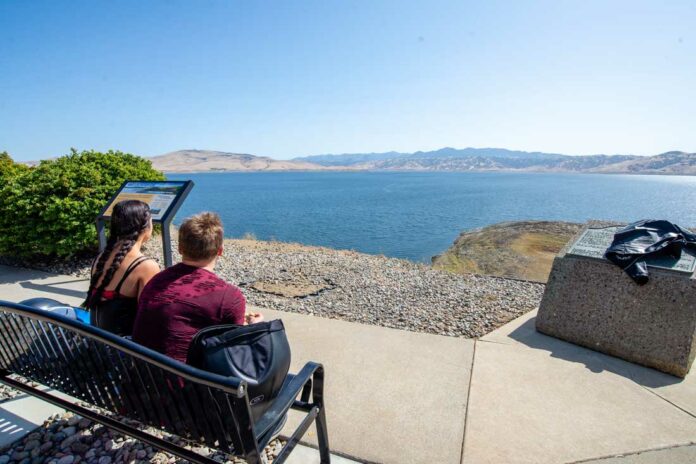
As the statewide drought continues and with San Benito County cut off from one of its primary sources of water from outside the county, local regulators and elected officials have begun implementing mandatory conservation measures for residents and businesses.
The biggest impact on the average household will be new restrictions on landscape irrigation watering for nearly every residential water customer in the county. The Hollister City Council on May 2 voted unanimously to implement such restrictions by declaring a “water shortage emergency” and implementing Stage II of the city’s “water shortage contingency plan.”
Under the Stage II restrictions, customers are restricted to watering their lawns to only two days per week, Shawn Novack of the San Benito County Water District told the council. The restrictions are mandatory, and the water district will work with city staff to enforce the measures. Violations are subject to citations and fines.
But for now, the focus on identifying water wasters will be more on education than penalties.
“It’s not like we’re going to come down on anybody right away,” Novack said. “We try to offer them assistance, remind them we’re in a drought, they’re wasting money as well as water and we have a service where we can go help them reach compliance.”
Residents can call SBCWD and request an assessment of their landscape irrigation system from the district’s staff, Novack said.
Novack explained that in the summertime, more than 60% of residential water use comes from outdoor landscaping and lawn irrigation. That’s why outdoor watering is targeted in the State II water shortage plan.
Hollister water customers will begin receiving inserts in their water bills explaining the new restrictions.
The San Juan Bautista City Council implemented similar Stage II restrictions on April 19. The Sunnyslope County Water District Board of Directors also did so on April 19. And the SBCWD board made a similar vote April 27.
Local water supplies are, in fact, still in good shape, according to various water officials. But the cities and water districts are acting now because of state and federal restrictions on supplies coming in from outside the county and even the region.
Earlier this year, the U.S. Bureau of Reclamation announced that San Benito County will receive zero percent of its typical allocation for municipal and industrial use from the Central Valley Project. Water from the CVP is stored at San Luis Reservoir, which was down to less than 50% of its capacity as of May 3.
Typically, CVP water is pumped from San Luis Reservoir to San Benito County for storage in the local groundwater basin or San Justo Reservoir, Novack explained. However, that flow of imported water into San Benito County has stopped for the rest of the year.
The Bureau of Reclamation’s limitations to San Benito County were largely prompted by reports earlier this year that the Sierra snowpack is far below normal levels, further depleting natural water supplies along with the lack of rainfall.
Still, while the local groundwater basin has seen a drop in elevation in recent months, it contains ample local supplies. Novack said there are currently about 500,000 acre-feet of water in the aquifer, which has been the county’s “saving grace” in the current and previous droughts.
“We’ve been living off our groundwater basin,” Novack said, though he cautioned, “But with water conservation, you have to act way before you’re in an emergency situation.”
In a year with normal precipitation, all customers throughout the county use about 40,000 acre-feet of water—about 30,000 of which is for agricultural use, Novack said.
Efforts to conserve water in the current drought began in May 2021, when the local regulators declared a Stage I water shortage. These measures called for a voluntary reduction of water use by 15% compared to pre-drought usage.
Sunnyslope Water District General Manager Drew Lander said the board adopted the new restrictions “mainly to keep consistent with the state of California,” which has been encouraging more prudent water conservation everywhere regardless of local supplies.
He echoed the notion that local groundwater supplies are flourishing, and noted that San Justo Reservoir is currently almost full.
“Everyone else is in much worse shape than Hollister is,” Lander said. “California has been very forceful in pushing the narrative that a lot of the state is running out of water, so we’re asking the public to coordinate and be on par with that.”
Lander added that board members on April 19 noted they don’t want the district to start out enforcing the Stage II restrictions with immediate citations and penalties. They would prefer to wait to see how the education and outreach of the mandatory restrictions will encourage reduced usage before taking a heavy-handed enforcement approach.










